Gerber baby food high in iron
USA Rice Federation, Gerber, address heavy metals in baby foods at public meeting
There could be “unintended consequences” if parents avoid infant rice cereal amid fears over arsenic, as food intake studies show iron-fortified cereal is the #1 source of iron in the infant diet, claimed speakers at the virtual USDA-FDA event, held on Zoom just over a year after the publication of a high-profile Congressional report alleging “dangerous” levels of inorganic arsenic, mercury, lead and cadmium in leading baby food brands.
‘Almost 20% of older infants are not getting enough iron’Data from Gerber’s FITS (Feeding Infants and Toddlers) study, which has been tracking food and nutrient intakes of babies and young children for several years, shows that almost a fifth of 6-12-month old babies in the US “are not getting enough iron, a nutrient essential for cognitive development in the first years of life,” said Cheryl Callen, senior director of regulatory affairs at Gerber.
“And when we consider absorption factors for iron, even more infants may not be getting enough iron. Without considering absorption, 18% of infants are not getting enough iron. But after applying absorption factors, this increases to 54% for all infants.”
FITS data also shows a “decrease in the consumption of iron rich foods and in particular infant rice cereal [which is typically fortified with iron, vitamins and minerals],” in recent years, added Callen, noting that 82% of 6-12-month old babies ate iron rich foods (mostly baby cereal) in 2002 vs 52% in 2016.
Moreover, “adequately nourished infants are also less susceptible to the effects of heavy metal exposure,” she said.
“We feel that this conversation [about infant nutrition] needs to be had in tandem with the heavy metal discussion to make sure that unintended consequences are managed.”
USA Rice Federation: ‘Consumption of rice baby cereal in the zero to 24 month population is linked to better nutrient intake’NHANES (National Health and Nutrition Examination Survey) data also showed that “consumption of rice baby cereal in the zero to 24 month population was linked to better nutrient intake, which leads to better overall health and lower risk of disease,” claimed Betsy Ward, president and CEO of the USA Rice Federation.
“Infants who consumed rice cereal had greater consumption of nutrients like iron and calcium, and lower intakes of unhealthy foods… in the 2020-2025 Dietary Guidelines for Americans, it was recognized how important rice cereal is in meeting nutrient needs for babies.”
USA Rice Federation: ‘Irresponsible reporting leads people to think this is simply a rice problem’Echoing frustrations voiced by one FDA official last year, Ward said the Congressional report left parents with the impression that the cause of the heavy metals problem is processed baby food from large food companies (when in fact this is an industry-wide issue), and that the solution is buying organic (not the case), or making their own baby food from fresh produce (which also contains heavy metals).
And given that the only FDA action level for infant food right now focuses on inorganic arsenic in baby rice cereal (100ppb), she said, rice foods are getting the brunt of the negative press, although, she claimed, the “levels of inorganic arsenic in rice grown in the United States are the lowest in the world, according to the UN and the WHO. "
"
She added: “Irresponsible reporting leads people to think this is simply a rice problem… We don't know how other ingredients may contribute to end product heavy metal levels since at present they are not regulated.
“This can result in hesitancy or refusal of some manufacturers to use rice as an ingredient, even though our rice is below the action level that FDA established,” claimed Ward, who also noted that inorganic arsenic is the issue, not arsenic per se (organic forms are absorbed less and excreted more rapidly).
“Arsenic is not just in our pantries, it's in our refrigerators, it's in our freezers, it's in our water. The most prevalent source of arsenic in the American diet is fruits, vegetables and juices, but I don't think anybody would suggest avoiding eating those healthy foods.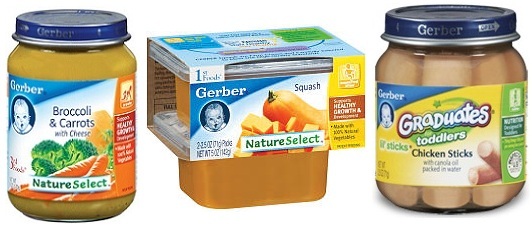 ”
”
Ward also expressed frustration over “false equivalencies” whereby very low action levels set for other food & beverage categories are used by health advocates as reference points for action levels for baby foods, when toxicologists will tell you that thresholds for drinking water, for example, are not immediately relevant to thresholds for other food categories because absorption rates might vary, or consumption patterns are different.
GettyImages-monkeybusinessimagesWhile some lawmakers and health advocacy groups say we need action levels for lead, cadmium, mercury and inorganic arsenic in all infant foods right now (the FDA is working on all of these metals but has thus far only set a 100ppb action level for inorganic arsenic in infant rice cereal), thresholds must be science-based and category-specific, and that takes time, said industry speakers at a joint FDA-USDA public meeting on Wednesday (April 27).
The meeting coincided with the release of FDA draft guidance proposing action levels for lead in fruit juice (see box below), which was published 15 months after a Congressional Subcommittee report alleging 'dangerously high' levels of heavy metals in leading baby food brands, prompting a torrent of lawsuits and the introduction of The Baby Food Safety Act in Congress.
‘Arsenic is found in almost anything that grows in the ground’That said, the USA Rice Federation is working hard to get to the source of the problem with heavy metals, said Ward.
“Whether mitigation comes from new rice types, new growing techniques, or some other advancement, the US industry is ready to adopt scientifically proven approaches. It involves soil chemistry, soil microbes, cultural management and other factors.
“In support of all that we have a taskforce that's looking at management practices, and we work with our rice researchers and extension specialists, and we’re submitting a proposal to USDA’s National Institute of Food and Agriculture soon.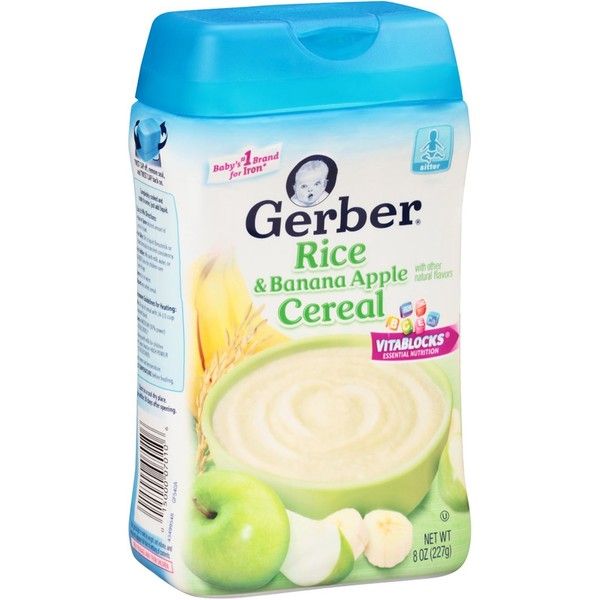 The objectives of that study are to identify current and potential alternate rice production practices that move us closer to zero.”
The objectives of that study are to identify current and potential alternate rice production practices that move us closer to zero.”
But she added: “Arsenic is found in almost anything that grows in the ground and there are really very few places where there isn't at least some detectable level.”
Alternate wetting and drying irrigation techniques for riceGerber is also working hard with suppliers to address the issue of heavy metals at source, said Callen, who noted that the company had had an “arsenic mitigation program for rice used in infant cereal in place since about 2015.
“This includes a partnership with our rice miller to source identity preserved rice that meets our internal specification and ensures compliance. We have also been working together to progressively lower inorganic arsenic levels in the rice for years.”
For the 2022 crop year, she said, “We are initiating work with a rice agronomist who will work with our growers to add new elements to our program. ”
”
One strategy, she said, is growing row rice using alternate wetting and drying irrigation techniques which reduce plant uptake and subsequent accumulation of arsenic.
“We believe that the use of these techniques will enable even lower levels of inorganic arsenic while providing other benefits to both the grower and the environment.”
Soil testing for root vegetables: Heavy metal update linked to pH of soilAs for root vegetables, Gerber has been “working with suppliers and growers on soil testing and field selection,” said Callen.
“Based on an extensive testing program we conducted in 2020, Gerber updated our 2021 soil testing program to include lower lead and cadmium limits for soil than we had before and to add soil pH as an acceptance criteria, as our data would indicate that this is a parameter that has the potential to impact heavy metal uptake.
“And starting this year, we are also initiating the use of some new technology to improve soil sample accuracy using GPS guided auto sampling of carrot fields in Michigan. We find that the more sampling we have, the finer the grid, the more information we'll be able to have on the field levels.”
We find that the more sampling we have, the finer the grid, the more information we'll be able to have on the field levels.”
She added: “In the areas of mitigation, we evaluate cultivars for heavy metal uptake and accumulation, and are looking for new ways to bind lead and cadmium in soils to minimize uptake.”
Nutrient uptake and heavy metal uptakeBut there are trade offs that need to be carefully monitored, cautioned Dr Emily Griep, VP regulatory compliance and global food safety standards at the International Fresh Produce Association, noting that “changes in plant uptake of heavy metals can be associated with changes in uptake of nutrients as well…
“We don't want nutrients that are critical for children's or human health to be lost in those mitigation efforts.”
GettyImages-tacojimWednesday’s joint USDA-FDA Closer to Zero public meeting - exploring agricultural techniques to mitigate uptake of toxic elements in crops – was held as the FDA released draft guidance proposing action levels of 10ppb lead in apple juice and 20ppb lead in other single-strength juices and juice blends as part of its Closer to Zero action plan.
The lower level for apple juice reflects the fact that it is the most commonly consumed juice by young children, and as such, may contribute a greater share of kids’ potential lead exposure than other juices, said the agency.
However, Consumer Reports said most manufacturers were already meeting the limits proposed by the FDA and that its tests suggested that much lower levels of lead in fruit juices (eg.1ppb) were feasible.
- Read more HERE about the FDA’s Closer to Zero initiative.
Iron in Baby Cereal: Best Uses, Safety, and the Importance of Iron
Listen to this article:
Your browser does not support the audio tag.
Iron is a very important nutrient throughout the lifespan, and particularly for developing babies. One of the easiest ways to make sure your baby is getting enough of this mineral is by adding iron-fortified baby cereal to their diet once they’ve weaned to solid foods.
However, iron-fortified baby cereal isn’t recommended for all babies. Plus, many parents have questions about the type and safety of iron added to baby cereal. Here’s what you need to know about getting enough iron for your baby, and whether iron-fortified baby cereal is a good option.
What is iron?
Iron is a mineral that’s naturally found in soil and in many foods. It’s also added to certain supplements and fortified foods, such as breakfast cereals and baby cereals.
It’s important to get enough iron because this nutrient plays a critical role in the transportation of oxygen throughout the body. It’s an essential component of hemoglobin, a protein in red blood cells that moves oxygen from the lungs to all of the tissues of the body. Iron is also a component of myoglobin, a muscle protein that provides oxygen, and is therefore also involved in keeping muscle cells healthy.
For babies, iron is especially important for neurological development, physical growth, making some hormones, and maintaining cellular health.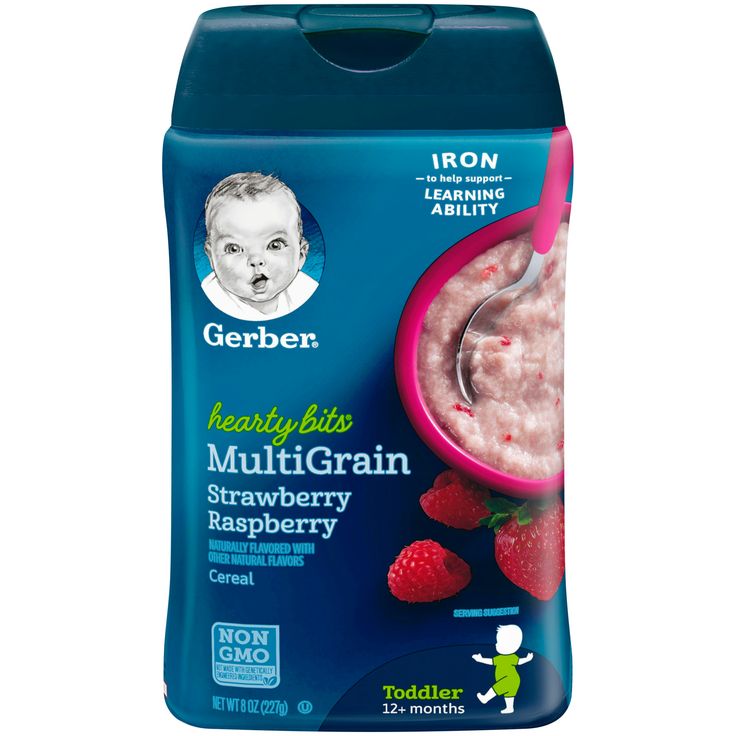
There are two forms of dietary iron: heme and non-heme. Heme iron is found in animal-derived foods, such as meat, poultry, and seafood. On the other hand, non-heme iron comes from plant foods, such as beans, peas, lentils, soy, tomatoes, nuts, and leafy greens.
How much iron does my baby need?
Babies accumulate and store enough iron to meet their needs while in utero. These stores are adequate to meet their iron needs for the first 4-6 months of life. Then, it’s time to think about where else iron will come from in their diet.
Not getting enough iron over time can lead to a depletion of iron stores and eventually iron deficiency, which is not uncommon around the world. In children, iron deficiency anemia can result in abnormalities in brain function and psychomotor skills, which can eventually lead to learning difficulties.
Iron deficiency early in life can be a persistent issue throughout life, so it’s important to make sure babies get enough iron and that parents are aware of dietary iron sources.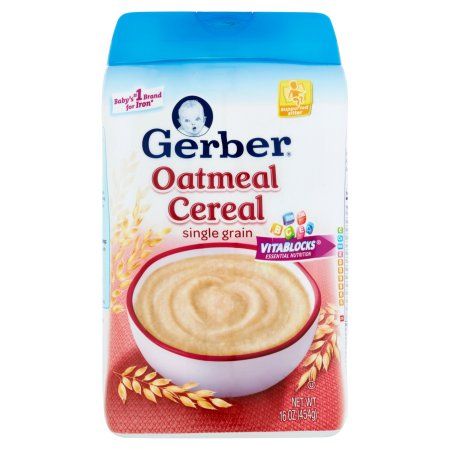 Infants who are born prematurely, or to mothers who are iron deficient, are at a higher risk for developing iron deficiency early in life.
Infants who are born prematurely, or to mothers who are iron deficient, are at a higher risk for developing iron deficiency early in life.
Potential symptoms of inadequate iron status in babies may include a slowed rate of weight gain, delayed physical growth, pale skin, lack of appetite, and general irritability or more fussiness than usual.
As for how much iron babies need, the adequate intake for 0-6-month-olds is 0.27 mg per day. The recommended dietary allowance for iron increases to 11 mg for 7-12-month-olds, and then adjusts to 7 mg for 1-3-year-old toddlers.
Note that while plant-based kids are not inherently at a higher risk for iron deficiency compared to omnivorous kids, it does appear to be more common in kids who don’t eat animal products. Some research also suggests that plant-based kids tend to have lower iron stores than omnivorous kids, despite having a similar intake of this nutrient - but this doesn’t appear to be a bad thing.
Many experts agree that a plant-based diet may increase recommended daily iron needs by 1. 8 times. This is likely because of multiple factors, such as plant-based (non-heme) iron having a lower absorption rate than animal-based (heme) iron.
8 times. This is likely because of multiple factors, such as plant-based (non-heme) iron having a lower absorption rate than animal-based (heme) iron.
Additionally, there are some compounds in iron-containing plant foods that can work against iron absorption. These compounds are called oxalates, polyphenols, and phytates and are found in foods like grains, leafy greens, nuts, and seeds. Calcium may also reduce the absorption of iron.
Of course, this doesn’t mean that these types of foods should be avoided as they offer a number of important nutrients and health benefits for babies. It just means that it’s important to offer a wide variety of iron-containing foods to your baby, particularly if they follow a totally plant-based diet.
How much iron is in infant cereal?
In order to help meet your baby’s iron needs, iron-fortified baby cereal has long been one of the simplest options for parents and caregivers to offer. While rice cereal has been the traditional option, many brands also make oat and multigrain baby cereals today that have iron added to them.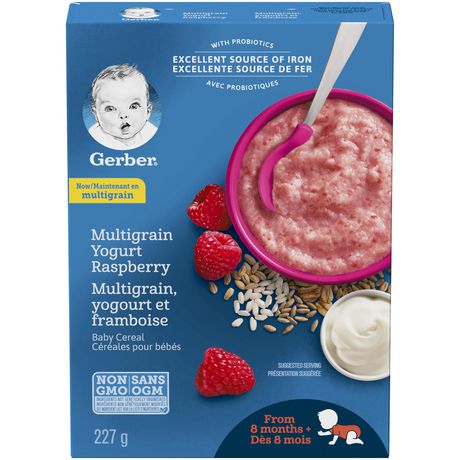 These may be a better option, due to the rising concern around arsenic contamination of rice-based baby products.
These may be a better option, due to the rising concern around arsenic contamination of rice-based baby products.
Babies who are starting to wean from breast milk and/or formula and being introduced to solid foods may not be eating a lot at first, but that’s okay. Iron-fortified baby cereals tend to pack in the iron in a small serving and are an appropriate choice for babies who aren’t getting iron from other supplemental sources.
For instance, iron-fortified baby cereals should only be used for babies who are exclusively breastfed, and not using infant formula, as the latter is already fortified adequately with iron. Only after the formula is no longer being used should formula-fed babies be introduced to these baby cereals.
In a 4 tablespoon (14 gram) serving of iron-fortified baby cereal, you’re likely to find at least 45-60% of your baby’s daily needs for iron or around 5 mg.
Is iron in baby cereal safe?
Yes, the iron in baby cereal is safe. The use of iron fortification is an effective and safe way to help meet an infant’s dietary needs for this nutrient if no other supplemental sources are being provided.
Again, iron-fortified baby cereal is not recommended for babies who are using infant formula for their nutrition needs. This is because the formula is already fortified with iron, and incorporating both sources can potentially contribute too much iron to your child’s diet. And too much iron, just like too little iron, can be problematic for developing kids.
On the other hand, exclusively breastfed babies are okay to be offered iron-fortified baby cereal daily starting at around 6 months of age. This is because the iron content of breast milk is naturally low, and largely unaffected by the mother’s diet. Some sources have found that breast milk contains only around 0.3 mg of iron per liter, making it a poor source of iron in itself.
In this case, iron-fortified baby cereal is a great option to help meet the needs of exclusively breastfed babies who are beginning to wean and try solid foods.
What kind of iron is in baby cereal?
The kind of iron used to fortify foods is non-heme iron, which is the same type found in plant-based foods. On the ingredients list, it may be listed as ferrous sulfate or potentially “Electrolytic Iron”.
On the ingredients list, it may be listed as ferrous sulfate or potentially “Electrolytic Iron”.
The iron used in baby cereal has been added for the purpose of easily helping you meet your baby’s daily needs. It does not change the flavor or texture of the baby cereal.
Is iron in baby cereal magnetic?
Recent headlines, sparked by viral videos on the internet, have some parents concerned over whether they’re feeding their baby magnetic cereal - and if this is unsafe.
The concern stems from someone who posted a video of placing a magnet over their infant’s baby cereal and purportedly pulling out metal particles. From here, other people tried the same experiment and found similar results.
While this sounds scary, don’t be alarmed. According to baby cereal manufacturers, including well-known and respected names like Gerber, the dark magnetic particles found in these are in fact added iron.
Fortifying baby cereals with iron means adding essential particles like this, and the reason people can pull them out with a magnet is that iron is a naturally magnetic metal.
Furthermore, the American Academy of Pediatrics has supported the use of iron fortification for infant formulas and baby products for decades due to the critical roles of this nutrient in a baby’s growth and neurological development.
The use of iron fortification in these ways has helped reduce the prevalence of iron deficiency anemia in children around the world, particularly in their first year of life as they adjust to consuming more iron-rich solid foods.
Does iron-fortified cereal cause constipation?
While large doses of iron can promote constipation in developing digestive tracts, the amount of iron in fortified baby cereals is generally unlikely to cause this issue for most babies.
Additionally, the type of iron used in baby cereals is meant to be easily digestible, further minimizing the risk for constipation.
If your baby is experiencing constipation that doesn’t go away, it’s best to speak with your child’s pediatrician or dietitian to examine potential causes and make adjustments where needed.
How to boost iron absorption
To help make sure your baby is getting enough iron, it’s a good idea to incorporate other foods that actually help boost iron absorption into their diet. Iron-rich foods should regularly be offered both to breastfed and formula-fed babies.
What types of foods are best to help with this? Vitamin C helps optimize iron bioavailability, so pairing foods that are rich in iron alongside foods that are rich in vitamin C is a super easy habit to get into.
Some examples of vitamin C food sources for babies include tomatoes, citrus fruits (like oranges and grapefruit), bell peppers, raspberries, and strawberries. Serve these types of foods alongside iron-fortified baby cereal whenever possible.
Make sure that you’re preparing these in age-appropriate ways, which may mean pureeing them or simply softening them and cutting them into safe sizes for babies who are doing baby-led weaning.
For younger babies, an easy way to add vitamin C is to add a few drops of orange juice to prepare baby cereal.
Overall, offering iron sources in addition to foods rich in vitamin C to your baby multiple times a day is the best way to help meet their needs, especially if your baby is not taking a daily multivitamin or iron supplement.
Other plant-based sources of iron for babies
It can be a good idea to offer babies iron-fortified baby cereal throughout their first year of life, as this is a reliable and high-quality source of this critical nutrient. In addition, however, you can and should offer whole food sources of iron to your baby as they become more used to eating.
While animal-derived foods like meat, poultry, seafood, and eggs may be the most widely recommended dietary sources of iron, don’t worry - this doesn’t mean that you can’t provide enough iron if your baby follows a plant-based diet.
Some of the best plant-based sources of iron for babies include:
- Hummus: 1 mg of iron in 3 Tbsp
- Tofu: 2.5 mg of iron in 2 ounces
- Sprouted grain bread: 1 mg of iron in 1 slice
- Spinach: 3 mg of iron in ½ cup cooked
- Kidney beans: 2 mg of iron in ½ cup
- Lentils: 3 mg of iron in ½ cup cooked
- Tomatoes: 2 mg of iron in ½ cup canned and stewed
- Quinoa: 1.
 5 mg of iron in ½ cup cooked
5 mg of iron in ½ cup cooked - Green peas: 1 mg of iron in ½ cup
- Chickpea or legume pasta: 3 mg of iron in 1 ounce
The Takeaway
Iron is a critical nutrient throughout the lifespan, and particularly during the first year of an infant’s life. While babies get enough iron from utero for the first 4-6 months, it’s important to make sure your child has other good sources after that.
Formula-fed babies will receive enough iron from the formula, as these are already fortified with it, and should not use fortified baby cereal. For exclusively breastfed babies, however, iron-fortified baby cereals are a great, inexpensive, and simple option to offer daily to help meet needs as your child expands their palate of solid foods. Both breastfed and formula-fed babies should be offered plenty of iron-rich whole foods as well.
For weaned toddlers who may benefit from additional dietary sources of iron, Else Nutrition Toddler Formula provides 55% of a toddler’s daily iron needs per serving.
Else Super Cereal for babies 6+ months is coming in January!
The content and advice provided in this article is for informational purposes only and is not a substitute for medical diagnosis, treatment, advice for specific medical conditions. Always consult a pediatrician to understand the individual needs of your child.
GERBER Veal 80g - 7613034752123
Our advantages
Delivery on the day of order
Delivery works 7 days a week across the Crimea from 10:00-20:00
Wide range
children under 5 years old.
Quality Assurance
All items in my Lvenok stores carry a manufacturer's warranty. nine0004
Promotions and discounts
Be the first to know about promotions, discounts and special offers from moy Lvenok store.
Convenient self-delivery
You can pick up the order yourself in one of the stores in Simferopol.
Own warehouse
All goods are placed in moy Lvenok's warehouse equipped for storing children's goods.
Payment methods
You can pay for the purchase in any way: cash to the courier, bank card to the courier, card according to the details. nine0004
- 235 rub
Not available
228 r
VIP discount card price in retail stores
Gerber® Veal baby puree is an excellent choice to start meat complementary foods. It has a delicate texture that is perfect for babies over the age of six months.
Veal meat is rich in complete protein and at the same time lean
Veal is considered one of the best sources of iron, and in combination with vitamin B12, it helps to maintain the balance of iron and the hematopoietic process in the child's body.
With a high meat content (62%) and organic ingredients, Gerber® Veal Puree is a pure, GMO-free, salt- and spice-free recipe.
Veal is suitable for accustoming to solid food, because it is well absorbed, and the delicate texture of mashed potatoes helps the baby get used to the new product. nine0004
COMPOSITION:
- veal meat (62%)
- water (32%)
- cornstarch (3%)
- low erucic rapeseed oil (3%)
- concentrated lemon juice Veal 80g Previous Next
Our advantages
Delivery on the day of order
Delivery works 7 days a week across the Crimea from 10:00-20:00
Wide range
and children under 5 years of age.
Quality Assurance
All items in my Lvenok stores carry a manufacturer's warranty.
Promotions and discounts
Be the first to know about promotions, discounts and special offers from moy Lvenok store.
Convenient self-delivery
You can pick up the order yourself in one of the stores in Simferopol.
Own warehouse
All goods are placed in moy Lvenok's warehouse equipped for storing children's goods.
Payment methods
You can pay for the purchase in any way: cash to the courier, bank card to the courier, card according to the details. nine0004
Products of this brand
Buy with this product
Don't forget to also buy
Gerber baby food | About the most beloved and beautiful
Every mother who cares about the health of her baby faces the problem of choosing baby food. Which baby food is the most useful, what products it is made from, whether the baby will like it - these are questions that concern any mother. Much in the production of quality food for children depends on the integrity of the manufacturer. Therefore, when choosing baby food, you should trust more proven companies that have managed to establish themselves in the world market. nine0004
nine0004
Gerber has been making baby food for over 80 years. The company's products are distinguished by a wide range, high quality raw materials, the use of the most advanced technologies for the production of tasty and healthy baby food. Gerber offers its customers fruit juices, fruit, fruit and cereal, meat, vegetable, meat and vegetable purees, fruit and milk desserts.
Gerber fruit and vegetable purees
From 4-5 months of age, pediatricians recommend introducing vegetables and fruits into the child's diet, which are important for the health and development of the child, because. are a source of potassium, iron, organic acids and plant fibers. nine0004
Complementary foods are a big step in your baby's nutrition. It is very important to choose the right products at the very beginning, as the health of the child also depends on this in the future. There is a lot of opinion and disagreement about the timing of the introduction of complementary foods. There are supporters of complementary foods for babies from 4 months. Some mothers introduce complementary foods when the child is 1 year old.
It is very important to choose the right products at the very beginning, as the health of the child also depends on this in the future. There is a lot of opinion and disagreement about the timing of the introduction of complementary foods. There are supporters of complementary foods for babies from 4 months. Some mothers introduce complementary foods when the child is 1 year old.
Doctors recommend introducing complementary foods from 6 months. The first complementary foods are usually started with fruit juices, vegetable and fruit purees. It is at this stage that the baby begins to get acquainted with the variety of new tastes. Quality baby food accelerates the physical development of the baby. But how, among the variety of manufacturers and names of companies producing children's products, to choose, and not be mistaken, high-quality nutrition, rich in all the necessary trace elements and vitamins?
Pediatricians recommend starting complementary foods for children with low weight in the form of cereals, and for overweight children - vegetable and fruit purees. It is recommended to introduce complementary foods gradually, starting with small doses of 1-2 teaspoons. It is better to give complementary foods at the beginning of the day, so that during the day you can monitor the condition of the child, to exclude allergic reactions. nine0004
It is recommended to introduce complementary foods gradually, starting with small doses of 1-2 teaspoons. It is better to give complementary foods at the beginning of the day, so that during the day you can monitor the condition of the child, to exclude allergic reactions. nine0004
Gerber one-component vegetable purees from carrots, cauliflower, white potatoes, pumpkin, broccoli and fruit purees from prunes, apples, pears, peaches are ideal for the first feeding. A little later, the baby can be offered multi-component purees: Cauliflower and Potato, Apple and Pear, etc. Gerber vegetable and fruit purees are made from environmentally friendly ripe fruits and vegetables without starch or preservatives.
Vegetable puree is recommended to start with one-component puree. It is better to start with cauliflower or broccoli. If the child refuses some types of puree, it can be recommended to add fruit pieces that the baby likes to the puree. But, if the child categorically refuses the dish, in no case should you force-feed him.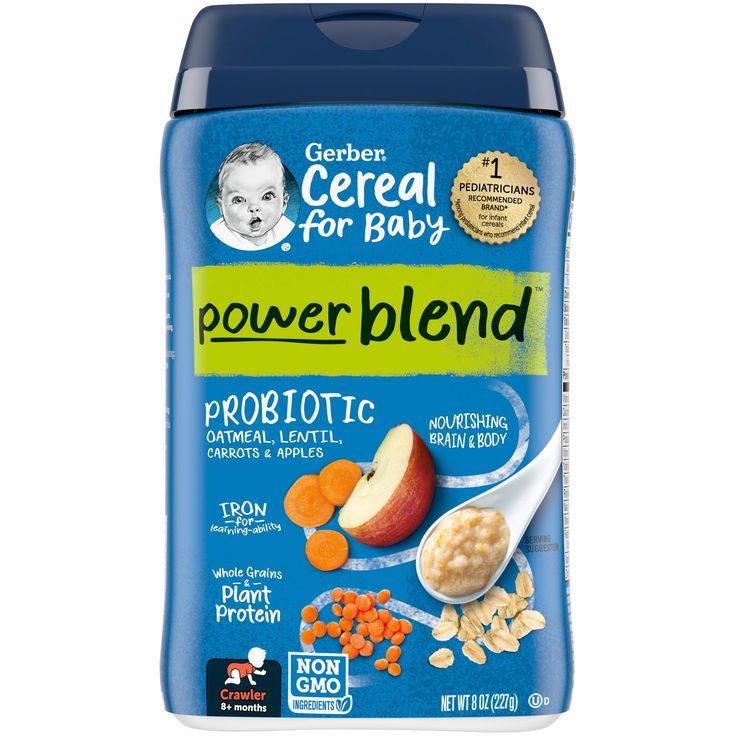 It is better to take a break and offer new food when the child comes from a walk and is hungry enough. nine0004
It is better to take a break and offer new food when the child comes from a walk and is hungry enough. nine0004
Now baby food in the retail chain is presented in a huge amount and assortment. Well, thank God, there are plenty to choose from! Let's take a look at some of the popular and best-selling food products that are produced by Gerber.
Fruits, vegetables and meat from which baby food is produced do not contain genetically modified products, dyes, preservatives, flavor and aroma enhancers, stabilizers. The company produces almost 70 types of baby food - fruit juice, fruit and vegetable purees, vegetable stews, fruit purees with cottage cheese. Gerber products are varied, tasty, natural, healthy nutrition for children. nine0004
The company produces one-component and multi-component vegetable and fruit purees, which is very convenient to gradually introduce the baby to a variety of new foods. The advantages of Gerber baby food are the modern technological process of their preparation. All products of this company are not subjected to intensive heat treatment, and this allows the products not to change their natural color and taste. Gerber products are free of starch and thickeners. One-component vegetable purees are used for the first feeding: carrots, cauliflower, white potatoes, pumpkin, broccoli. Children like carrots, cauliflower, pumpkin very much. nine0004
All products of this company are not subjected to intensive heat treatment, and this allows the products not to change their natural color and taste. Gerber products are free of starch and thickeners. One-component vegetable purees are used for the first feeding: carrots, cauliflower, white potatoes, pumpkin, broccoli. Children like carrots, cauliflower, pumpkin very much. nine0004
Excellent one-component fruit purees: prunes, pear, apple, peach. Children especially like pear and apple. One-component purees of the first complementary foods can be given to babies from 4-6 months.
Lots of Gerber products for babies from 6 months. Puree from various vegetables with veal, rabbit and chicken is an ideal nutrition with the content of essential fatty acids Omega 3 and Omega 6, which contribute to the development of the brain, strengthen the child's vision and immunity. This is very important, since these acids can only enter the human body with certain foods. nine0060 From the age of 6 months, children can be offered fruit purees with cottage cheese, such as apricot, banana, strawberry, peach. The benefits of cottage cheese in baby food are great. This fermented milk product is rich in calcium, potassium, sodium, phosphorus, vitamin B12, B2. Cottage cheese contains a large amount of protein needed by a growing body.
The benefits of cottage cheese in baby food are great. This fermented milk product is rich in calcium, potassium, sodium, phosphorus, vitamin B12, B2. Cottage cheese contains a large amount of protein needed by a growing body.
Gerber products are also very convenient because the older the child, the more varied the food, and the volume of jars is increased according to age. Gerber juices also deserve special mention. We will not describe how useful juice is for a child's health, how many vitamins, organic acids and minerals it contains. It is very convenient that Gerber juices are also divided into single-component and multi-component. This allows you to enter them from 4 months. One-component apple and pear juices are low allergenic. Therefore, it is recommended to start complementary foods with them. As the child grows, multi-component juices such as apple and carrot can be introduced; apple, grapes and wild rose; apple, grape and mint, etc. The value of Gerber juices lies in the fact that they are all made without preservatives and sugar.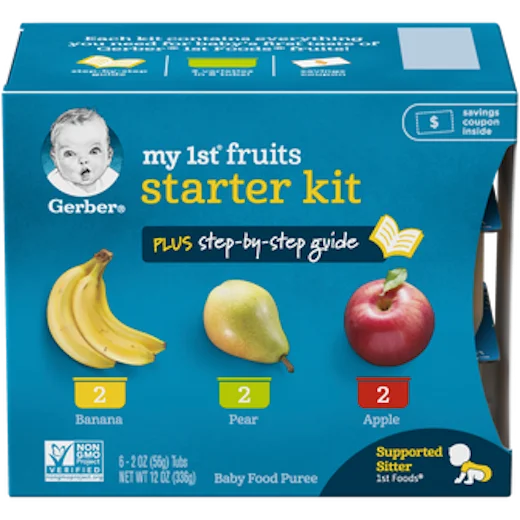 Due to their natural taste and nutritional value, many mothers have approved Gerber juices and give them to their children. Gerber means healthy, strong children and calm mothers! Gerber is a reliable assistant for moms! nine0004
Due to their natural taste and nutritional value, many mothers have approved Gerber juices and give them to their children. Gerber means healthy, strong children and calm mothers! Gerber is a reliable assistant for moms! nine0004
Gerber Fruit Juices
Juice should be introduced into the baby's diet no earlier than 4-5 months. You should start with single-component juices. Gerber produces apple juice (clarified or with pulp) and pear juice. Gerber juices made from two or more fruits: "Apple-Carrot", "Apple-Pear", "Apple-Peach", "Apple-Cherry" are perfect for children from 5 months.
Gerber puree assortment
Gerber puree with cottage cheese. nine0004
An important baby food product is cottage cheese, which contains a lot of protein and calcium salts. It is also rich in iron, vitamins B1 and PP. Gerber puree from apricot with cottage cheese, banana with cottage cheese, peach with cottage cheese and strawberry with cottage cheese is not only healthy, but also very tasty.
Gerber puree with cream.
The cream contains a large amount of easily digestible milk fat, as well as fat-soluble vitamins. Pear puree with cream, peach with cream, banana with cream, strawberries with cream, apricot with cream will please the baby. nine0004
But it should be remembered that children with cow's milk intolerance should only be introduced to dairy products after consulting a pediatrician.
Gerber meat purees.
Meat puree is an essential food product for a baby from 6 months. Meat contains vitamins, iron, protein and other nutrients that play an important role in the development and growth of the child. Gerber baby food are meat purees made from all types of meat suitable for a child: chicken, turkey, beef, veal, pork, lamb and rabbit. In addition to meat purees, Gerber baby food includes various types of vegetable puree with meat: vegetable puree with rabbit, veal stew with pumpkin and carrots, turkey stew with rice, etc.











